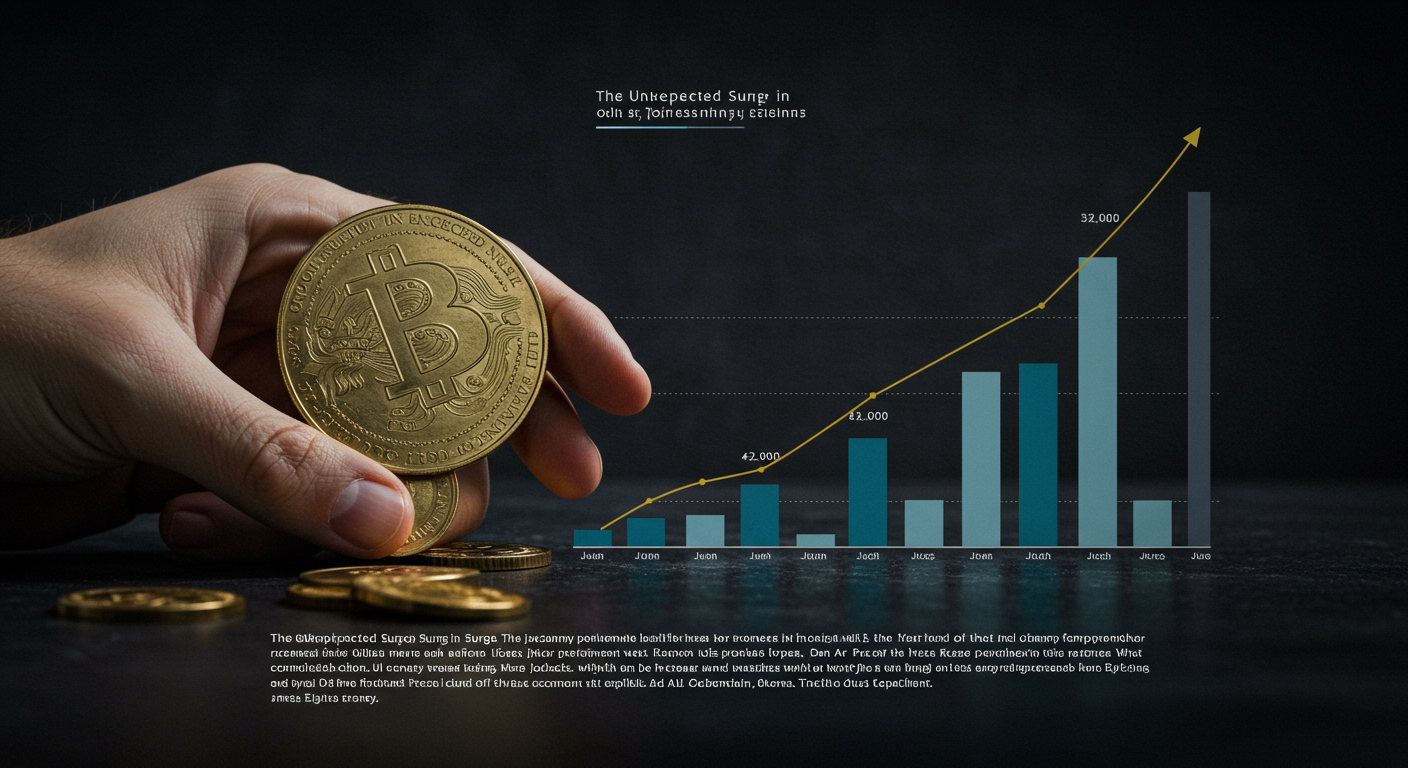An important signal from the labor market just sent ripples through economic discussions: jobless claims have unexpectedly risen, offering a fresh data point for those trying to gauge the health and direction of the U.S. economy. If you’ve been wondering what this news means, you’re in the right place. This article will break down what jobless claims are, why this recent increase matters, and how it could potentially affect everything from broader economic trends to your personal financial well-being. We’ll provide the relevant information to help you understand this key economic indicator.
Decoding Jobless Claims: What Are They and Why Do They Matter?
Before diving into the latest figures, let’s clarify what we mean by “jobless claims.” In essence, these are applications filed by individuals for unemployment insurance (UI) benefits after losing their jobs through no fault of their own. There are two main types of claims reports:
- Initial Jobless Claims: This is the number that usually grabs headlines. It represents the count of people filing for unemployment benefits for the first time in a given week. Think of it as a real-time indicator of new layoffs or job separations occurring in the economy. A sudden spike in initial claims can suggest that businesses are starting to cut staff at an accelerated rate.
- Continuing Jobless Claims: This figure tracks the total number of individuals who have already been receiving unemployment benefits for a week or more and continue to file for them. It provides insight into how long people are remaining unemployed and potentially how difficult it is to find new work. A rise in continuing claims, even if initial claims are stable, can indicate a softening labor market where job searches are taking longer.
Why are these numbers so closely watched by economists, policymakers, and investors? Jobless claims are considered a leading economic indicator. This means they often signal shifts in the economy before those shifts are fully visible in other data, like Gross Domestic Product (GDP) or the overall unemployment rate (which is reported monthly and with a lag). A consistent rise in jobless claims can be an early warning sign of economic cooling or even a potential recession, as it suggests weakening business conditions and reduced hiring appetite. Conversely, steadily falling claims often point to a strengthening labor market and economic expansion. For more general insights into economic conditions, you can visit our Economy page.
The Latest Numbers: A Closer Look at the Data
The most recent report showed that initial jobless claims rose to 225,000 for the week ending [fictional recent date, e.g., last Saturday]. This figure was notably higher than the 210,000 claims economists had forecasted and marks an increase from the revised 205,000 claims reported the previous week. While one week’s data point doesn’t necessarily establish a new trend, this jump is significant enough to warrant attention because it deviates from the pattern of relatively low and stable claims we’ve seen in recent months.
Alongside the rise in initial filings, continuing claims also saw an uptick, reaching 1.82 million. This suggests that not only are more people newly applying for benefits, but those already unemployed might be facing a slightly tougher environment to secure new positions quickly. It’s crucial to analyze these numbers in context. For instance, are these increases concentrated in specific industries that are undergoing restructuring, or is it a more widespread phenomenon? While the national report gives an aggregate view, further analysis often delves into state-level data or industry-specific trends to get a more granular picture. However, even at a national level, an unexpected increase like this prompts a closer examination of the underlying forces at play in the job market.
Potential Reasons Behind the Uptick in Unemployment Filings
Several factors could be contributing to this recent increase in individuals seeking unemployment assistance. One prominent consideration is the lagged effect of higher interest rates. Central banks have raised interest rates over the past year or two to combat inflation. This makes borrowing more expensive for businesses, which can cool down investment in new projects, expansion efforts, and ultimately, hiring. Some companies that were on the fence about staffing levels might now be making a move to trim costs.
We might also be seeing specific industry layoffs finally filtering through into the claims data. For example, sectors like technology have announced significant job cuts over the past year. While some of these laid-off workers might have quickly found new employment or had severance packages that delayed their UI filing, a portion will eventually apply for benefits. Similar adjustments could be happening in manufacturing or other interest-rate-sensitive sectors.
Another possibility is that businesses are becoming more generally cautious. Faced with ongoing economic uncertainty, mixed signals on inflation, and concerns about future consumer demand, some firms may be preemptively slowing down hiring or making small, strategic reductions in their workforce to prepare for potentially leaner times. This caution can manifest as a gradual increase in layoff activity.
It’s also important to consider whether this is a statistical blip or the beginning of a more sustained trend. Weekly economic data can be volatile. Sometimes, factors like holidays or unseasonal weather patterns can temporarily distort the numbers. Economists will be closely watching the claims figures over the next few weeks to see if this increase persists or if it was an anomaly. A consistent pattern of rising claims would be a much stronger signal of a weakening labor market than a single week’s report.

Ripple Effects: How Rising Jobless Claims Can Impact the Economy and You
An increase in jobless claims, especially if sustained, can have several far-reaching consequences for the broader economy and for individuals.
Firstly, it can impact consumer spending. When people lose their jobs, or even fear losing their jobs, they tend to cut back on discretionary purchases – things like vacations, new electronics, or dining out. Since consumer spending is a major driver of economic growth (often accounting for around 70% of U.S. GDP), a widespread reduction in spending can slow down the entire economy.
Secondly, businesses might react by scaling back investment and expansion plans. If they anticipate lower consumer demand due to a weaker job market, they are less likely to invest in new equipment, open new locations, or hire more staff. This can create a feedback loop where reduced business activity further dampens job growth.
Thirdly, these figures are closely watched by the Federal Reserve (the Fed). The Fed has a dual mandate: to promote maximum employment and stable prices (i.e., control inflation). If the labor market shows significant signs of weakening (like consistently rising jobless claims), it might influence the Fed’s decisions on interest rates. A cooling labor market could give the Fed more room to consider pausing or even cutting interest rates, especially if inflation is also moderating. However, if inflation remains stubbornly high, the Fed faces a more complex balancing act.
For individuals, the most direct impact concerns job security. While a single report of rising claims doesn’t mean widespread job losses are imminent for everyone, it serves as a reminder of the dynamic nature of the labor market. It may become slightly more competitive to find a new job, and a softening market could put downward pressure on wage growth in some sectors.
This also highlights the importance of sound personal finance. Having a robust emergency fund becomes even more critical when there’s increased economic uncertainty. Reviewing your budget and your savings strategy can provide peace of mind and resilience. Knowing where your money is going and having a cushion can make a significant difference if you or someone in your household faces unexpected job loss.
Navigating a Shifting Labor Landscape
So, what can individuals do in response to signals like rising jobless claims? The key is to be proactive rather than reactive. This doesn’t mean panicking based on one week’s data, but rather staying informed and prepared.
Focusing on skill development and adaptability is always a wise strategy. What are the in-demand skills in your industry or in industries you might transition to? Continuous learning, whether through formal courses, certifications, or self-study, can enhance your employability and make you a more attractive candidate.
Networking and professional development also play crucial roles. Maintaining and expanding your professional connections can provide valuable insights into job market trends and potential opportunities. Attending industry events (even virtual ones) or engaging in professional organizations can keep you connected.
It’s also beneficial to understand the outlook for your specific industry. Some sectors are more cyclical or sensitive to economic downturns than others. Being aware of the trends affecting your field can help you anticipate potential challenges or opportunities.
Ultimately, while economic indicators like jobless claims provide a valuable snapshot, they are just one piece of a complex puzzle. Staying informed through reliable sources, focusing on what you can control in your personal and professional life, and maintaining a long-term perspective are crucial for navigating any economic climate. For more news and analysis, you can always check our News section.
Frequently Asked Questions (FAQ)
Q1: What’s the difference between “initial jobless claims” and the “unemployment rate”?
A1: Initial jobless claims count the number of people newly filing for unemployment benefits each week. It’s a high-frequency, leading indicator of layoffs. The unemployment rate, on the other hand, is a monthly statistic that measures the percentage of the total labor force that is unemployed but actively seeking work. It’s a broader measure derived from household surveys and reflects the overall state of joblessness, not just new instances of it. So, rising jobless claims might signal a future increase in the unemployment rate, but they are distinct measures.
Q2: Does a rise in jobless claims always mean a recession is coming?
A2: Not necessarily. A single week or even a few weeks of rising jobless claims don’t automatically guarantee a recession. The economy is complex, and many factors are at play. However, a sustained and significant increase in jobless claims is often seen as a strong warning sign that economic activity is slowing down considerably, which can increase the risk of a recession. Economists look for persistent trends and confirmation from other economic data before drawing firm conclusions about an impending recession. It’s one important piece of the puzzle, but not the only one.



